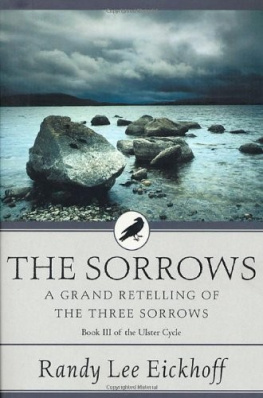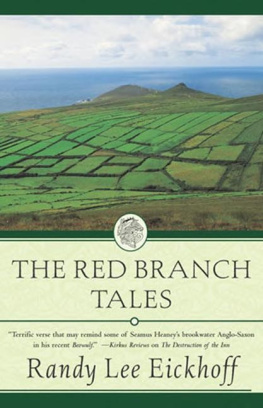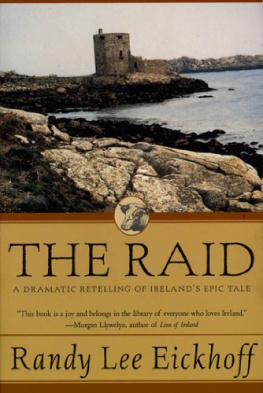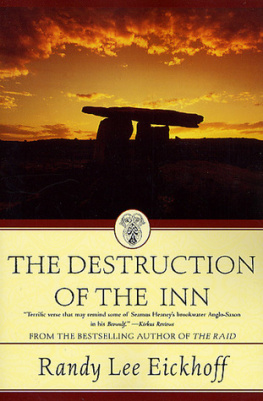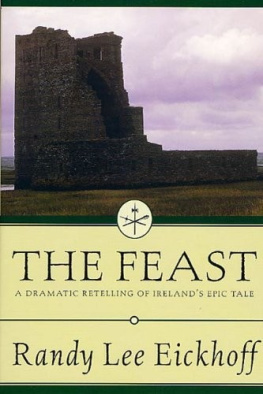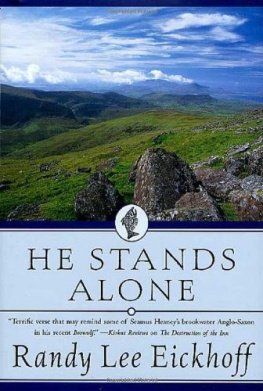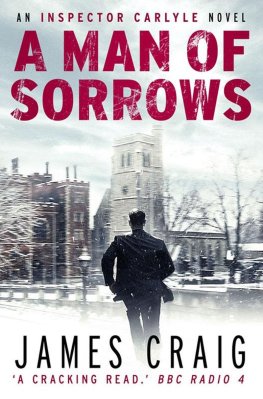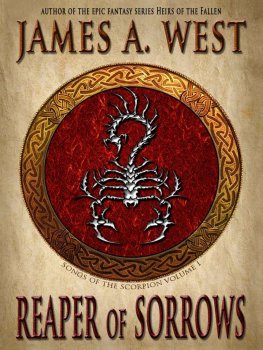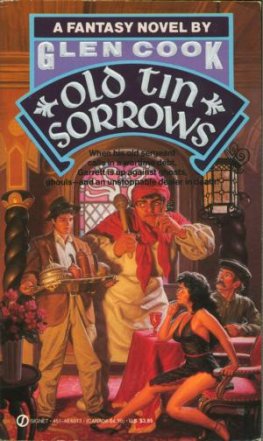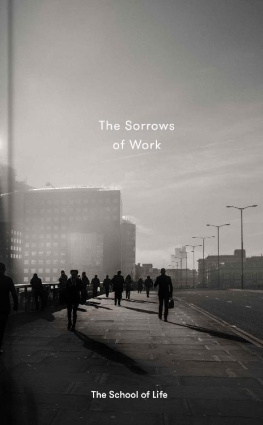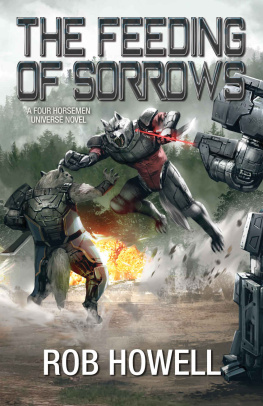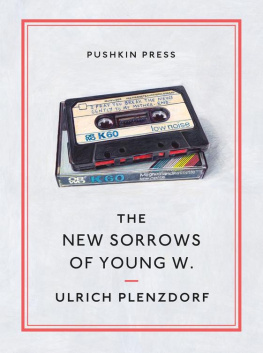The author and publisher have provided this e-book to you without Digital Rights Management software (DRM) applied so that you can enjoy reading it on your personal devices. This e-book is for your personal use only. You may not print or post this e-book, or make this e-book publicly available in any way. You may not copy, reproduce or upload this e-book, other than to read it on one of your personal devices.
Copyright infringement is against the law. If you believe the copy of this e-book you are reading infringes on the authors copyright, please notify the publisher at: us.macmillanusa.com/piracy .
FIRST MUSICIAN. I have a story right, my wanderers,
That has so mixed with fable in our songs
That all seemed fabulous .
William Butler Yeats, Deirdre
Ancient Irish tales generally appear in medieval manuscripts, where they are usually divided into four categories:
The Mythological Cycle
The Ulster Cycle (sometimes referred to as The Red Branch Cycle)
The Fenian Cycle
The Historical Cycle
On the surface, such a division would seem to form didactic categories, yet the tales and sagas do not follow rigid lines that preclude them from association with tales in other categories. These categories are loosely arranged to establish a time line, but not all of the tales follow a time line. The poets in Ancient Ireland did not memorize the required poems according to cycles to fulfill the demands of their school. Rather, they memorized poems according to categories:
Of the qualifications of a Poet in Stories and in Deeds, here follows, to be related to kings and chiefs, viz: Seven times Fifty Stories, i.e. Five times Fifty Prime Stories,and Twice Fifty Secondary Stories; and these Secondary Stories are not permitted [assigned] but to four grades only, viz., an Ollamb , an Anrath , a Cli , and a Cano . And these are the Prime Stories: Destructions, and Cattle-raids, and Courtships, and Battles, and Caves, and Voyages, and Violent Deaths, and Feasts, and Sieges, and Adventures, and Elopements, and Slaughters.
The Book of Leinster
There were 250 Prime Stories and 100 Secondary Stories, but in The Book of Leinster, fewer than 200 of the Prime Stories and none of the Secondary Stories are listed. One could assume that the stories are simply missing from the canon. One could also assume, however, that certain stories were joined with other stories to provide a more complete story. A section of Tin B Cuailnge is devoted to the Macgnimartha (youthful exploits) of Cchulainn and in the Fenian Cycle, there is a tale simply called Macgnmartha Finn .
The listing of the tales in this fashion by the bards provided a loose system of categories that restricted the telling of certain stories at certain times. For example, certain poems would be recited for people going off on a voyage, before going to a court of law, or going out on a hunt. It would appear that the telling of these stories in accordance with Brehon Law formed a system of censure. Apparently the ancient storytellers realized the power of their stories in the effect that the stories had upon those who listened to them.
Myths belong to the world of symbols, but there are no definitive exegeses. The dramatis personae from tales in one cycle often refer to tales in another cycle as well. In the so-called Mythological Cycle, the chief characters belong to the Tuatha D Danann, The People of the Goddess Danu, who were the inhabitants of Ireland before the Sons of Mil came on the ninth wave (that which comes from the outermost limits of the cosmos) to overthrow the Tuatha and take control of the land. According to legend, the Tuatha and the Milesians held a conference in which the Tuatha said that it was senseless to be fighting over the land since it was big enough for all and suggested that the land be divided between the two peoples. The Milesians agreed, saying thatthey would take the land above ground and the Tuatha could have the land below. The Milesians were being metaphorical here, telling the Tuatha that they intended to do battle, but the Tuatha took them literally and melted away into the ground, becoming residents of sdhes, which can roughly be explained as portals into the Otherworld.
The Tuatha are the forerunners of todays fairies and sprites (the famous fairy-rings are sites where they hold their dances on special days such as harvest days) while the Milesians are the ancestors of todays Irish.
The Tuatha, however, were also involved in conquering another race that inhabited Ireland before the Tuatha arrived. The Fir Bolgs were overthrown by the Tuatha, who then were forced to fight off the Fomorians, a race of giants who apparently were the forerunners of the Vikings. These stories are found in the medieval pseudo-historical tract Lebor Cabla (The Book of Invasions).
For our purposes, The Mythological Cycle is simply a collective term that applies to stories dealing for the most part with characters from the Otherworld, a type of sixth dimension, if you will. Many of these characters are Irish manifestations of the Celtic pantheon of divine beings. Lugh, however, who appears as a major participant in Oidheadh Cloinne Tuireann (The Fate of the Children of Tuirenn also known as Iuchar agus Iucharba ) in the Mythological Cycle also plays a major role in Tin B Cuailnge (Cattle-raid of Cooley ) in the Ulster Cycle.
We find references to other characters as well in some of the stories from the Mythological Cycle that are also in the Ulster Cycle. Characters from Togail Brhuidne D Drga (The Destruction of Da Dergas Hostel) are also found or referenced in Ulster Tales such as Tin B Cuailnge ( Cattle-raid of Cooley ), the central tale of the Ulster Cycle and often referred to as the national epic of Ireland for its metaphorical alignment with modern Irish culture and society. Maeves father, Eochaid Feidlech, is synonymous with Eochaid Airem in The Hostel . Cormac, the king of Ulster (referred to in several Ulster or Red Branch Tales), is married to tain in Tochmarc tane (The Wooing of tain). Consequently, we have to be careful not to be too didactic when consigning a tale to a single category.
Actually, the ancient tales are arranged in a loose chronological sequence that extends from the time of the Great Flood to the Viking raids in Ireland. Events in the Mythological Cycle seem to be synchronized,for the most part, with main events in ancient world history. Conchobor, king of Ulster in most of the Ulster Cycle, usually is found in tales that bridge the time just before and after the birth of Christ, while the Fenian Cycle is named after the tales in which Finn and his fiana (brotherhood) served Cormac Mac Airt, believed to have been king in Ireland in A.D. 3.

